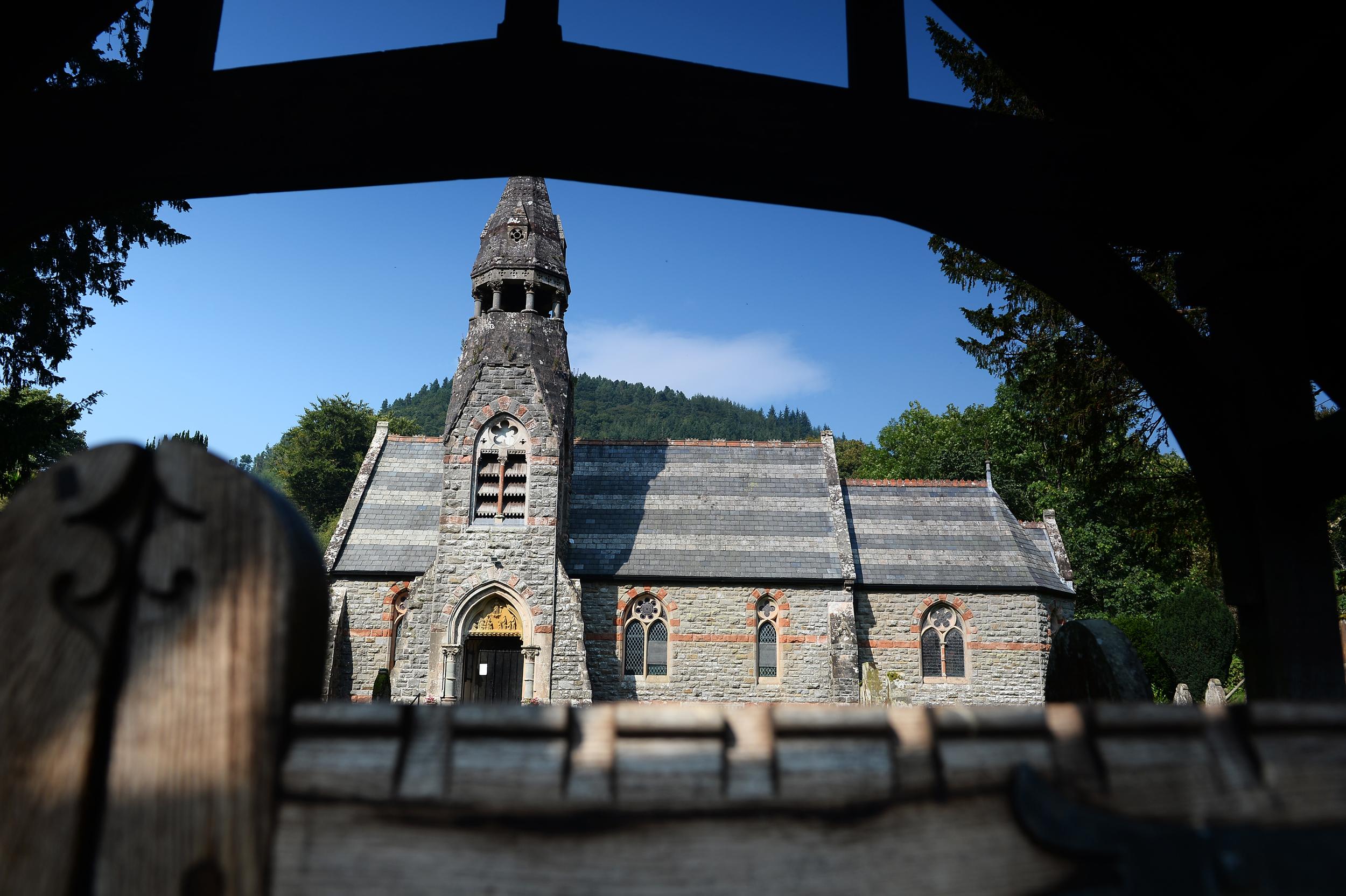St David
Cregrina, Powys
Whitewashed, and with a minute bellcote, this is another delightful and remote Radnorshire church dedicated to St David.

The church of St Mary in Abbeycwmhir was built in 1865 by Mary Beatrice Philips, sister of the squire.
Abbeycwmhir, Powys
The church is ornately gothic in style, with coloured bands in the stonework and an elaborate tower over the porch. Over the door is a copy of a weatherworn tympanum which was found in the abbey ruins. The copy on the church interprets it as a picture of the Ascension, but modern scholars think it more likely that the original depicts the Assumption of the Virgin. As well as this copy, the church houses much of the carved stone rescued from the abbey.
This 19th century church replaced an earlier 17th century church before which part of the local Abbey may have served as the parish church.
The name Abbeycwmhir derives from the Cistercian monastery built here in 1143 and translates as Abbey in the long (hir) valley (cwm). Abbeycwmhir is also the burial place of the last native Prince of Wales 'Llewellyn the Last'. His head was taken to London and his body buried here,there is a memorial stone for him in the ruins of the old Abbey.
Cregrina, Powys
Whitewashed, and with a minute bellcote, this is another delightful and remote Radnorshire church dedicated to St David.
Llandegley, Powys
The Pales Quaker Meeting House was built in 1717 and has been in continuous use as a place of worship since that time, the thatched building and attached cottage are Grade II* listed buildings and the adjacent graveyard has been in use since the mid 1600s.
Disserth, Powys
This is one of those extraordinarily atmospheric churches that escaped the Victorian improvers.